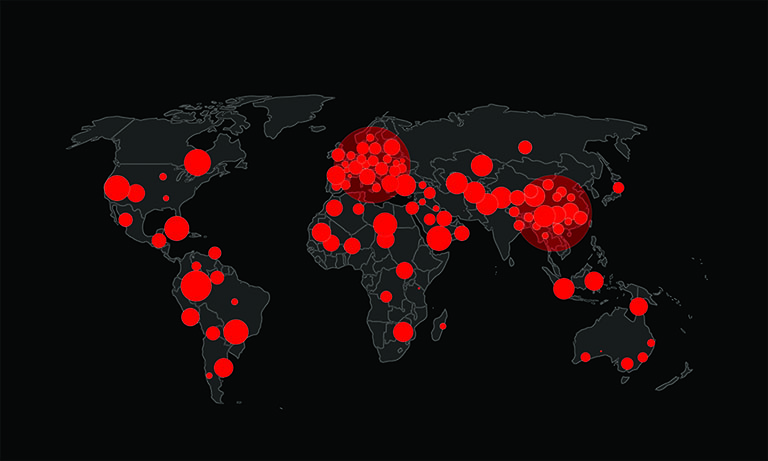AkiraBot Platform: An AI-Powered Challenge for Website Security

Since artificial intelligence (AI) and cybersecurity are constantly evolving, a new AI-powered tool known as AkiraBot has recently come under scrutiny. This sophisticated platform has been deployed to infiltrate website chat functions, comment sections, and contact forms to promote dubious search engine optimization (SEO) services. The implications of AkiraBot's capabilities present significant challenges for businesses and cybersecurity professionals alike.
Table of Contents
Understanding AkiraBot and Its Operations
AkiraBot is a Python-based AI tool designed to automate bulk messaging campaigns that flood website communication channels with spam. It has primarily been utilized to promote SEO services such as Akira and ServicewrapGO. The platform has already targeted over 400,000 websites, successfully delivering spam messages to at least 80,000 sites since September 2024.
What sets AkiraBot apart is its ability to bypass traditional spam filters and CAPTCHA security measures, making it a particularly formidable tool. Leveraging OpenAI's large language models (LLMs), it customizes outreach messages to align with the targeted website's content, increasing the likelihood of engagement. The system also integrates a graphical user interface (GUI), allowing users to select target websites and control the volume of concurrent messaging.
Initially launched as "Shopbot," which primarily focused on websites hosted on Shopify, AkiraBot has since broadened its reach. It now targets platforms including GoDaddy, Wix, and Squarespace, as well as sites that employ Reamaze for their contact forms and chat widgets.
How AkiraBot Bypasses Security Measures
The effectiveness of AkiraBot lies in its ability to bypass standard security features such as CAPTCHA protections. This is accomplished using proxy services typically employed by advertisers to mask the source of traffic. By mimicking human behavior and leveraging multiple proxy hosts from SmartProxy, the bot manages to evade network-based security detections.
Additionally, AkiraBot meticulously logs its activities, tracking successful and unsuccessful spam attempts in a file labeled "submissions.csv." This data is then analyzed, with key success metrics regarding CAPTCHA evasion and proxy performance reported to a Telegram channel.
The Implications of AkiraBot’s Capabilities
The emergence of AkiraBot presents a significant concern for website administrators and cybersecurity professionals. Its ability to generate AI-driven spam messages at scale poses challenges to maintaining secure and user-friendly website communication channels. Businesses that rely on online engagement tools may see their customer interactions diluted by automated spam, reducing the effectiveness of genuine inquiries and customer service efforts.
Moreover, the tool highlights broader concerns about AI's role in cyber threats. While AI has been leveraged for beneficial applications, including cybersecurity defenses and business automation, AkiraBot exemplifies how the technology can be exploited to undermine online security protocols. The ease with which AI-generated content can bypass traditional spam filters suggests a growing need for enhanced AI-driven security solutions.
Response and Countermeasures
In response to the threat posed by AkiraBot, OpenAI has taken swift action, disabling the API key and other assets linked to the platform. However, the continuous development and refinement of similar tools suggest that new iterations of AI-driven spam bots will likely emerge.
For businesses and website administrators, combating AkiraBot and similar threats requires a multifaceted approach. Strengthening CAPTCHA mechanisms, integrating AI-powered spam detection tools, and employing behavior-based security measures can help mitigate the impact of automated spam campaigns. Additionally, businesses should stay informed about emerging threats and continuously update their security protocols.
The Bigger Picture: AI and Cybersecurity Challenges
AkiraBot is not an isolated case; it is part of a larger trend involving the weaponization of AI in cybercrime. The rise of tools such as Xanthorox AI, which facilitates code generation, malware development, and vulnerability exploitation, further underscores the need for vigilance in AI cybersecurity.
The key takeaway from the AkiraBot case is that AI is increasingly being integrated into cyber threats, making it crucial for security professionals to adapt. As AI-powered cybercrime evolves, businesses, governments, and cybersecurity firms must work together to develop countermeasures that leverage AI for protection rather than exploitation.
Final Thoughts
The AkiraBot platform represents a new frontier in AI-driven cyber threats, demonstrating the potential for AI to be used in large-scale, automated spam campaigns. With its ability to bypass security measures and generate custom outreach messages, it challenges traditional spam prevention strategies and underscores the growing cybersecurity risks posed by AI-powered tools.
While OpenAI's intervention has curtailed some of AkiraBot's activities, the broader implications remain clear. Businesses and security professionals must proactively adapt to the changing landscape of AI-driven cyber threats. By implementing stronger security measures and leveraging AI for defense, organizations can protect themselves from emerging challenges like AkiraBot and future iterations of AI-enhanced cybercrime.








